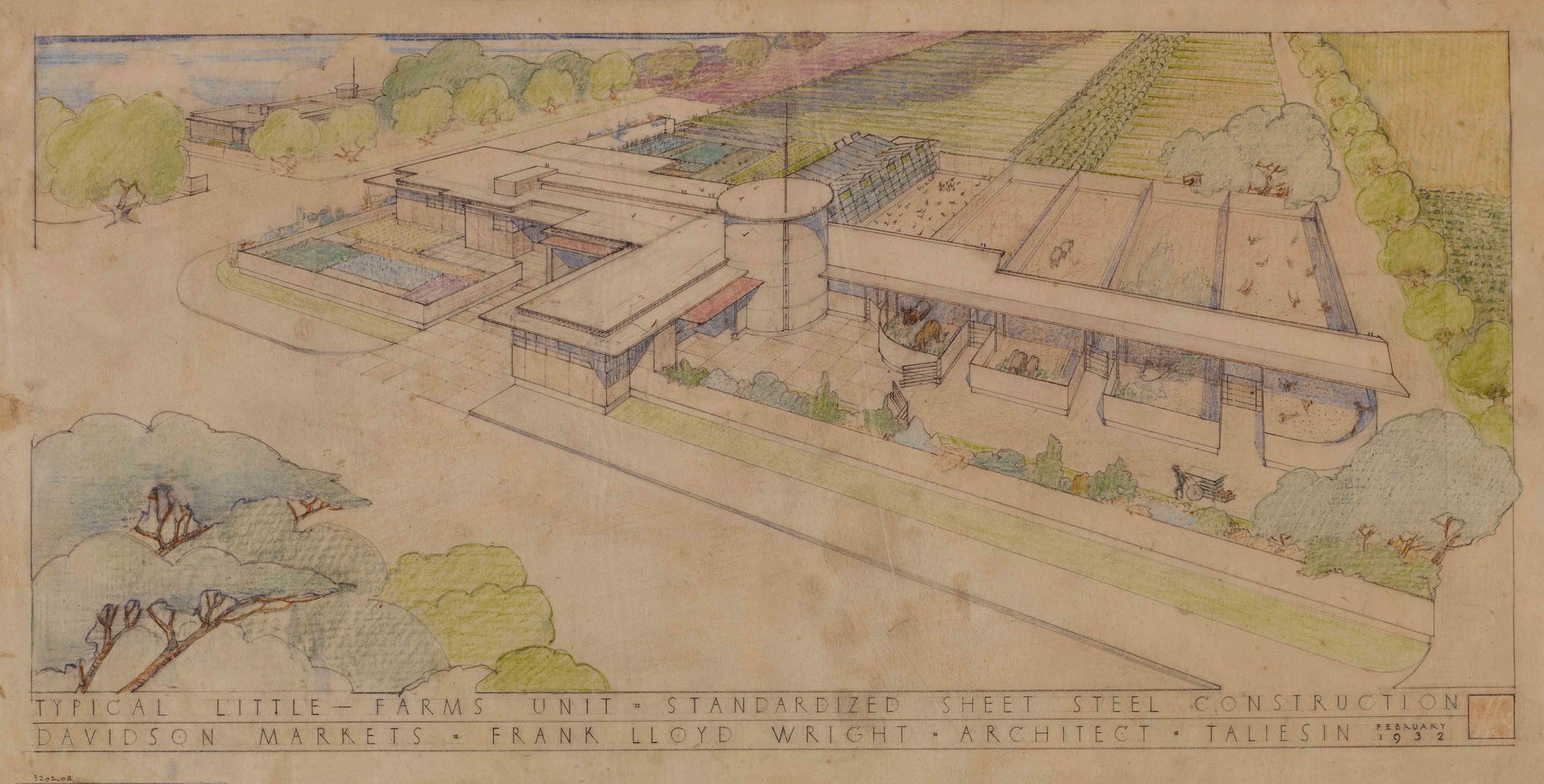
Frank Lloyd Wright's smart plan to fix the great depression
The architect planned to create prefab farming units - complete with crèches and beauty parlours
Frank Lloyd Wright’s first job was in farming. He helped out on his uncle's farm in Spring Green, Wisconsin, during the summer when he was a kid, and retained a strong appreciation for both how architecture should fit into the natural landscape, and how we should all go about getting the best food we can. When Wright built his studio and estate, Taliesin, a few miles south of Spring Green, he included farming facilities, and that wasn’t the limit of his argricultural ambitions, as MoMA’s current Frank Lloyd Wright exhibition makes clear.
At the height of the Great Depression, Walter Davidson, an advertising executive and friend of Wright’s, approached the architect with a proposal. Could Wright design a series of small, pre-fabricated farms, each with an attached market, which might enable allow small-scale farmers a way to turn a profit, or at the very least, escape bankrupcy?
Agriculture suffered heavily during the 1930s, yet this project, called the Davidson Little Farms Unit, was more than a simple economic fix. As MoMA curator Juliet Kinchin explains in this accompanying video, Wright’s little, demountable farms reimagined this key element of the rural landscape as a kind of agricultural mainstreet, with fresh meat and produce, as well as less obvious inclusions, such as a beauty parlour, a creche, and a selection of restaurants.
The scheme used modern materials such as sheet metal, and hoped to introduce electricity to communities which had relied on less clean energy sources. Wright and Davidson wanted to get President Roosevelt to back their plan, and Wright even worked his little farms into a better-known, far larger suburban plan, Broadacre City.
Unfortunately, none of this broke ground. Anyone familiar with modern agriculture will know that farms are huge, as is the distance between grower and consumer. However, it's interesting to see how Wright’s 1930s vision of farm-to-table consumption has quite a lot in common with our contemporary enthusiasm for fresh, seasonal and locally-sourced cuisine.
MoMA curator Jennifer Gray is hosting a talk today at the museum, entitled Frank Lloyd Wright: Where Should Our Food Come From? Wright died over half a century ago, yet Gray’s question is posed in the present tense. Perhaps his agricultural ideas are still germane to today’s farmers, chefs and food lovers.
For more on Wright take a look at these great books. Meanwhile, for a modern take on farm and table get Brae and On Vegetables.